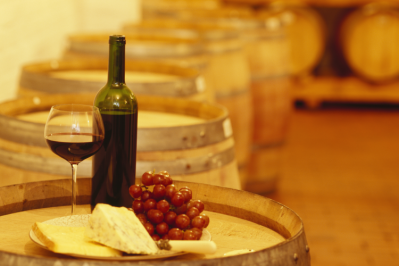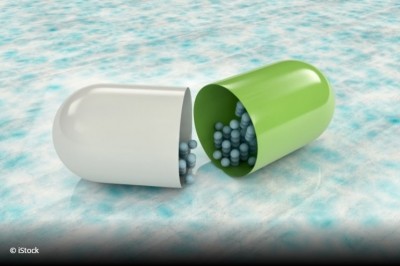Survey highlights prevalence of unlabelled nanomaterials: 'One of the most worrying health safety issues related to consumer products’

AVICENN, a specialist association that monitors nanomaterials, has published the findings of its latest report on their presence in everyday products. The survey makes for uncomfortable reading, revealing the presence of unlabelled nanomaterials – some of which are prohibited outright and all of which need to be labelled in food products under EU law - in 20 of 23 everyday items tested.
In a period that spanned 2021-22, AVICENN sent a range of food, cosmetic, textile and hygiene products to the National Metrology and Testing Laboratory (LNE) to determine whether nanomaterials could be detected in the end products. The results showed nanomaterials were found in products ranging from Guigoz infant milk, to Herta pastry, Aosta ham, Solgar vitamin C and Royal Canin dog food.
“We were surprised at the high proportion of products containing nanos,” the association said, noting that nanosilica was found in food products with no mention of silica in the list of ingredients, while titanium dioxide was discovered in the blotting cloth under the cutlet of chicken.
“These results question the extent of the use of nanos in everyday products and show the relevance – and even the necessity – to use new [and] existing tools and think outside the box [to address] nanos in commonly used items,” AVICENN said.
Responding to the report, French consumer group Que Choisir said: “These results show to what extent the labelling of nanos is eminently flawed. Compulsory for cosmetic and food products, it is not present on any of the [samples] tested.”
This, AVICENN underlined, ‘shows the imperative [for the authorities] to reinforce the law, controls and sanctions’ against unlabelled nanoparticles.
Do nanoparticles present a health risk?
Nanotechnologies have revolutionized food technology with changes to food production, manufacture, and processing that are intended to make our food safer and healthier. Phytosanitary products, processing aids, food additives, and surfaces that touch food in storage can all transfer nanoparticles that might be consumed by humans. But could these developments have unforeseen consequences for our health?
Many everyday products containing nanomaterials are already on the European market. But while they may offer technical and commercial opportunities, they ‘may also pose risks to our health and the environment’, according to the European Chemicals Agency (ECHA).
According to Que Choisir, which conducted its own survey into nanomaterials in products five years ago, the AVICENN findings show how little progress has been made by the industry. “Nanoparticles have remained over the years one of the most worrying health safety issues related to consumer products,” the organisation said.
Evidence on the health impact of nanomaterials remains somewhat inconclusive. However, some studies suggest that eating them may cause inflammation of the digestive tract, damage DNA, and harm cells. If inhaled, nanoparticles in the body may contribute to lung inflammation and heart problems.
Meanwhile, a new study published in Frontiers, suggests that by crossing the placental barrier and getting into breastmilk nanoparticles might make babies more vulnerable to allergies. “Due to the immunotoxic and biocidal properties of nanoparticles, exposure may disrupt the host-intestinal microbiota’s beneficial exchanges and may interfere with intestinal barrier and gut-associated immune system development in fetus and neonate,” said Dr Karine Adel-Patient, corresponding author of the study. “This may be linked to the epidemic of immune-related disorders in children, such as food allergies – a major public health concern.”
Nanoparticles are not absorbed in the gut but accumulate there, influencing the bacteria present in the gut microbiome by changing the diversity and proportions of the species present. “Given the evidence for the importance of the gut microbiome in developing a well-educated immune system, this is concerning for allergy development. Nanoparticles also affect the epithelium intestinal barrier, which is another essential component of a healthy reaction to dietary proteins,” the researchers noted.
Titanium dioxide (E171) is one of the most commonly used nanomaterials in the food sector, where it is used as a white food colouring. However, in May 2021 the European Food Safety Authority (EFSA) published an opinion that stated that titanium dioxide can no longer be considered safe when used as a food additive. The European Commission and the Member States then agreed to remove all uses of titanium dioxide as an additive in food and in January 2022 a Regulation withdrawing the authorisation to use titanium dioxide as a food additive in food products was adopted.
In light of the titanium dioxide ruling, French authorities have urged caution over the use of nanomaterials in food products. The National Agency for Food, Environmental and Occupational Health Safety’s (ANSES) Aurélie Niaudet reiterated its stance on products containing nanomaterials due to persistent unknowns in a recent interview.
“It is clear that there are still many grey areas regarding population exposure to nanomaterials and the potential impact on health and the environment,” said Niaudet, who is based at the agency’s physical risk assessment unit. “In addition to strengthening the regulatory framework, it is also important to limit exposure of the population and the environment as a precautionary measure, by choosing safe products that are equally effective but free of nanomaterials.”

























